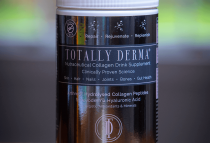Signs of Sun Damage
Sunshine can bring you a host of health benefits, such as vitamin D production and an elevated mood. Of course, exposure to ultraviolet light from the sun or tanning beds also has damaging effects on the skin. Here is a look at how UV damage from the sun or tanning beds manifests itself in your skin and how to prevent such damage.
Prevention Tips to Keep Your Skin Healthy
Changes in Skin Color
Freckles, age spots and liver spots are all signs of sun-damaged skin, with light-skinned people typically being the most susceptible. Sun damage can also appear as red areas with more blood vessels or white spots.
Changes in Skin Texture
Overexposure to UV rays can cause your skin to appear prematurely aged. For example, your skin may become more thick, coarse, leathery or wrinkly. It may also be more likely to tear and bruise especially on the forearms and backs of the hands.
Moles
Sunlight exposure, especially in childhood, fuels the development of moles, but many are not harmful. However, too much UV exposure, especially sunburns and tanning, will increase your risk of dangerous moles. These moles may be irregularly shaped, new, or changing. This can indicate the development of melanoma. Anytime you notice a new mole or a change in an existing mole, it is good practice to schedule an appointment with a Dermatologist to have it looked at.
Skin Cancer
Sun damage can be fatal when it leads to a skin cancer like melanoma. The good news about melanoma is it is curable when caught early. So early detection and treatment are key. Keeping an eye on your skin and performing a monthly self-skin exam in the mirror can help you catch melanoma early.
The ABCDE’s of skin cancer are:
A –Asymmetry (half the mole doesn’t match the other half)
B –Border (irregular border)
C –Color (color that is not uniform)
D – Diameter (diameter that is greater than 6mm)
E –Evolving (evolving size, shape or color)
For children we also add: Amelanotic (pink); Bleeding, Bump; Color uniformity (may be all the same color); De novo (new), any Diameter (maybe smaller than 6mm) to the ABCDs
If you notice any of these, schedule an appointment for a skin exam.
Common areas of the body for melanoma to occur include areas of chronic sun damage or sunburns like the legs, chest, back, face, ears and neck. Less commonly it will arise in areas that are protected from the sun. The incidence of melanoma is on the rise. One in fifty America’s will develop melanoma. Thankfully, due to early detection and treatment the vast majority will not die of this disease. However, the American Cancer Society predicts more than 7,200 deaths from melanoma in 2019. This disease has many risk factors, including having red or light-colored hair, having many moles, having many atypical moles, having an organ transplant and being of an older age. Two risk factors, sunburn and UV exposure from the sun or a tanning bed, are under your control.
Non-melanoma skin cancer like basal cell and squamous cell carcinoma are much more common. One in five Americans will develop one of these in their lifetime. Basal cell cancer grows in areas that have been overexposed to the sun or tanning beds. It normally does not spread to other areas of the body can be destructive to local tissues but does need to be treated and removed. Squamous cell carcinoma can spread, though this is rare. However, this type of cancer can still be fatal if left untreated. As with melanoma, early detection and treatment are key. Anyone with a history of sunburns or chronic sun exposure should see a dermatologist to be screened.
How To Prevent Sun Damage
Limiting your exposure to the sun cuts down on sunburns. It helps keep yourself and your skin healthy. Take these skin care steps:
Wearing broad-spectrum sunscreen that is SPF 30 or higher. Use on exposed areas like the face, neck, chest, and arms every day in addition to “when you are out in the sun”. Daily incidental sun exposure really adds up.
- Avoid indoor and outdoor tanning.
- Applying sunscreen 15 minutes before sun exposure. Reapply every two hours. Use a generous amount. Most of us don’t use enough to get the spf on the label.
- Avoiding peak sunshine hours (usually 10 a.m. to 3 p.m.)
- Use sun other forms of sun protection: sunglasses, hats, clothing,
- Using food and supplements instead of constant sunshine to get you vitamin D
- Avoid tanning beds, and check your skin regularly.
Contact Dermatology San Antonio
If you have a history of sunburns, chronic sun damage, see changes in your skin, dark spots, new/changing moles or something else worrisome during a skin check, please















